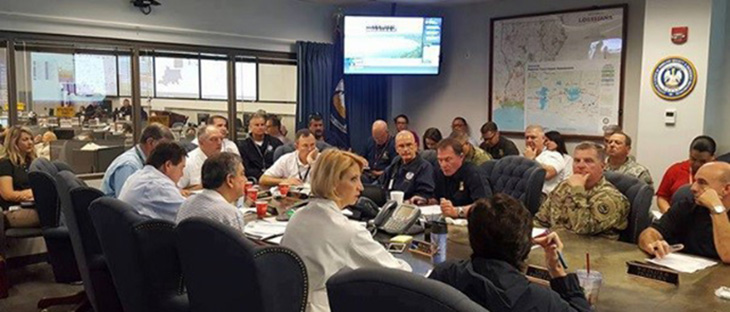Public Media's Role in Emergency Services
Public media in the U.S. is locally managed and operated, allowing stations to easily collaborate with local governments, first responders, schools, businesses, and others to provide real-time support in times of emergency. In many states and local communities, public media stations' digital and broadcast infrastructure provides the backbone for emergency alert, public safety, first responder, and homeland security services.
CPB invests in building local station capacity to assist emergency service providers. These partnerships include providing access to 24/7 camera feeds for public safety challenges, connecting public safety agencies in real time, providing state governors a secure and resilient communications platform, and much more. Many stations serve as their states' primary Emergency Alert Service hub for weather and AMBER Alerts. Public media stations also send emergency alert text messages through broadcast equipment to cell phone subscribers, reaching people wherever they are, even when the power is out.
The Federal Emergency Management Agency (FEMA) has awarded CPB $40 million to establish and implement the Next Generation Warning System (NGWS) grant program. CPB will administer a competitive grant program for public television and public radio stations to replace and upgrade infrastructure to expand alert, warning, and interoperable communications, creating a more resilient and secure public alerting system. CPB has issued a Request for Applications (RFA) for public media stations to apply for these grants.

Here are some of the life-saving services that select stations offer:
- The Florida Public Radio Emergency Network (FPREN), a collaboration of 13 public radio stations headquartered at the University of Florida's WUFT-FM/TV in Gainesville, provides statewide multimedia updates during hurricanes or other emergencies to stations across the state, their websites, social media channels and on mobile devices via the Florida Storms app. The free app provides geotargeted information with live hurricane forecasts, evacuation routes and shelter details, and it live streams the closest Florida public radio station.
- South Carolina Educational Television (SCETV)/South Carolina Public Radio partnered with FPREN to launch the SC Emergency Information Network (SCEIN) to provide weather emergency content statewide. SCETV serves as the liaison with the South Carolina Emergency Management Division, producing and coordinating the Governor's live briefings on all its channels. SCETV is the media of record for the state's Emergency Management Division.
- To reach diverse communities with health and safety information, Twin Cities PBS launched TPT NOW, the nation's first 24/7 TV channel broadcasting real-time, emergency alerts in English, Spanish, Hmong and Somali. During the coronavirus pandemic, TPT NOW aired messages from the governor, the Minnesota Department of Health and the World Health Organization translated into multiple languages and made the translations available to other media.
- Alabama Public Television's (APT) microwave system serves as the backbone of Alabama's Emergency Alert System, distributing national, state, and local emergency broadcast signals to all radio and television broadcasters throughout the state. APT is also the hub for Alabama's AMBER Alert system to track missing children.
- Vegas PBS provides a full range of Emergency Alert Services, including severe weather and civil alerts. It broadcasts geo-targeted alerts on behalf of the Department of Homeland Security's Personal Localized Alerting Network (PLAN) system, which provides instant message-style warnings to wireless providers and their subscribers. PLAN sends emergency alerts to mobile devices in the affected areas.
- Maine Public broadcasting network makes its statewide spectrum available to federal and state authorities to communicate with first responders and the media in the event of an emergency. The one-way closed communication system works even when internet connections are down and the power is out.
- WHUT-TV partners with the U.S. Park Police to distribute helicopter and other video services when large crowds gather in Washington, D.C. This work has been critical during Presidential inaugurations, the Fourth of July, protests, and other large-scale events on the National Mall.
- Houston Public Media (KUHT) can deliver secure, encrypted IP data to targeted, multiple users while continuing its television broadcast service. This encrypted data delivery system can deliver a helicopter aerial feed to police, dashboard camera footage to firefighters, building blueprints to specific users, and television programs to public viewers all at the same time. These resources have been used during presidential debates, the Super Bowl and other major sporting events, and natural disasters such as Hurricane Harvey-related flooding.

